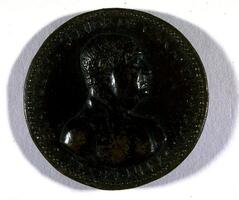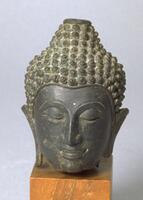872 UMMA Objects
872 UMMA Objects
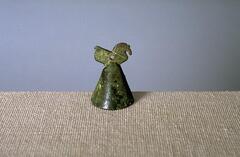
Iranian (Iranian)
Bell
Gift of the Estate of Maxine W. Kunstadter in memory of Sigmund Kunstadter, Class of 1922
1983/1.425

Iranian (Iranian)
Beaker
Gift of the Estate of Maxine W. Kunstadter in memory of Sigmund Kunstadter, Class of 1922
1983/1.429
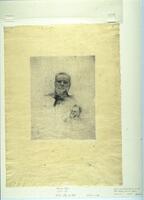
Auguste Rodin (French (culture or style))
Victor Hugo, de face
1885
Museum Purchase made possible by the Friends of the Museum of Art
1992/2.5
![This stone dagger has a handle that is divided into two parts, separated from each other by a thinner band. The upper tier is smaller in length than the lower tier, which flares outward as it approaches the end. The tip of blade is broken off. In profile, the blade thickens in the center.<br />
<br />
Carved from stone, this dagger with a two-tier handle is missing only its tip. The cross section of the blade is rhomboid, while that of the handle is shaped like a convex lens. The dagger is of the later two-tier-handled type (<em>idanbyeongsik</em>), meaning that it probably dates from the end of the early Bronze Age or the beginning of the middle Bronze Age. Max Loehr (1903- 1988) was a German art historian specializing in East Asian art who taught at the University of Michigan from 1951 to 1960 as a professor.<br />
[Korean Collection, University of Michigan Museum of Art (2017) p.32] This stone dagger has a handle that is divided into two parts, separated from each other by a thinner band. The upper tier is smaller in length than the lower tier, which flares outward as it approaches the end. The tip of blade is broken off. In profile, the blade thickens in the center.<br />
<br />
Carved from stone, this dagger with a two-tier handle is missing only its tip. The cross section of the blade is rhomboid, while that of the handle is shaped like a convex lens. The dagger is of the later two-tier-handled type (<em>idanbyeongsik</em>), meaning that it probably dates from the end of the early Bronze Age or the beginning of the middle Bronze Age. Max Loehr (1903- 1988) was a German art historian specializing in East Asian art who taught at the University of Michigan from 1951 to 1960 as a professor.<br />
[Korean Collection, University of Michigan Museum of Art (2017) p.32]](/media/W1siZiIsIjIwMjIvMDUvMjUvMjhpaWV3MzJmbV9kZWZhdWx0LmpwZyJdLFsicCIsInRodW1iIiwiMjQweDIwMCJdXQ?sha=d2502c4cf43f3c8e)
Korean (Korean (culture or style))
Polished Stone Dagger
900 BCE – 701 BCE
Museum purchase from the collection of Max Loehr
1960/2.117

1100 – 1299
Museum purchase made possible by the Margaret Watson Parker Art Collection Fund
1961/1.182
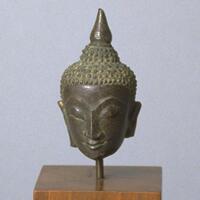
Thai
Head of a Buddha, with flaming topknot
1600 – 1799
Gift of the Estate of Margaret E. Tracy
1978/2.46
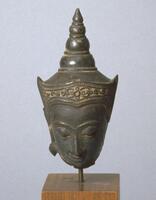
Thai
Head of a Buddha, adorned with a crown
16th century
Gift of the Estate of Margaret E. Tracy
1978/2.47
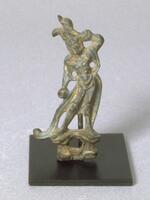
Chinese (Chinese (culture or style))
Dvarapala (guardian figure) from a Buddhist altar
618 – 907
Gift of Mrs. Caroline I. Plumer for the James Marshall Plumer Collection
1963/1.81
![Shiva sits with his consort on a double lotus pedestal. He has six arms, his right three are in varada mudra [a giving gesture], holds a rosary and an arrow. His left arms cup his consorts left breast and hold a lotus flower and a bow. He sits in royal ease, with one leg pendant. He wears bracelets, armlets, necklaces, earrings, and a sacred thread that stretches form his left shoulder down past his waist. On his head he wears an elaborate jatamukuta, a crown interlaced with his matted locks. Parvati sits upon his knee with one leg tucked under her and the other pendant. She is also adorned with jewelry, but wears a more modest diadem at the front of her head.<br /> Shiva sits with his consort on a double lotus pedestal. He has six arms, his right three are in varada mudra [a giving gesture], holds a rosary and an arrow. His left arms cup his consorts left breast and hold a lotus flower and a bow. He sits in royal ease, with one leg pendant. He wears bracelets, armlets, necklaces, earrings, and a sacred thread that stretches form his left shoulder down past his waist. On his head he wears an elaborate jatamukuta, a crown interlaced with his matted locks. Parvati sits upon his knee with one leg tucked under her and the other pendant. She is also adorned with jewelry, but wears a more modest diadem at the front of her head.<br />](/media/W1siZiIsIjIwMjIvMDUvMjUvMnF5ZHF1aXpyaV9kZWZhdWx0LmpwZyJdLFsicCIsInRodW1iIiwiMjQweDIwMCJdXQ?sha=5e9565cd110a2b87)
Indian (Indian (South Asian))
Uma-Maheshvara, a seated Shiva and Parvati (Uma)
12th century
Museum purchase for the James Marshall Plumer Memorial Collection
1964/2.85

Malvina Hoffman
Small Study for the Column of Life
1911 – 1921
Gift of Dr. and Mrs. Theodore B. Russell
1968/1.51
Loading…
